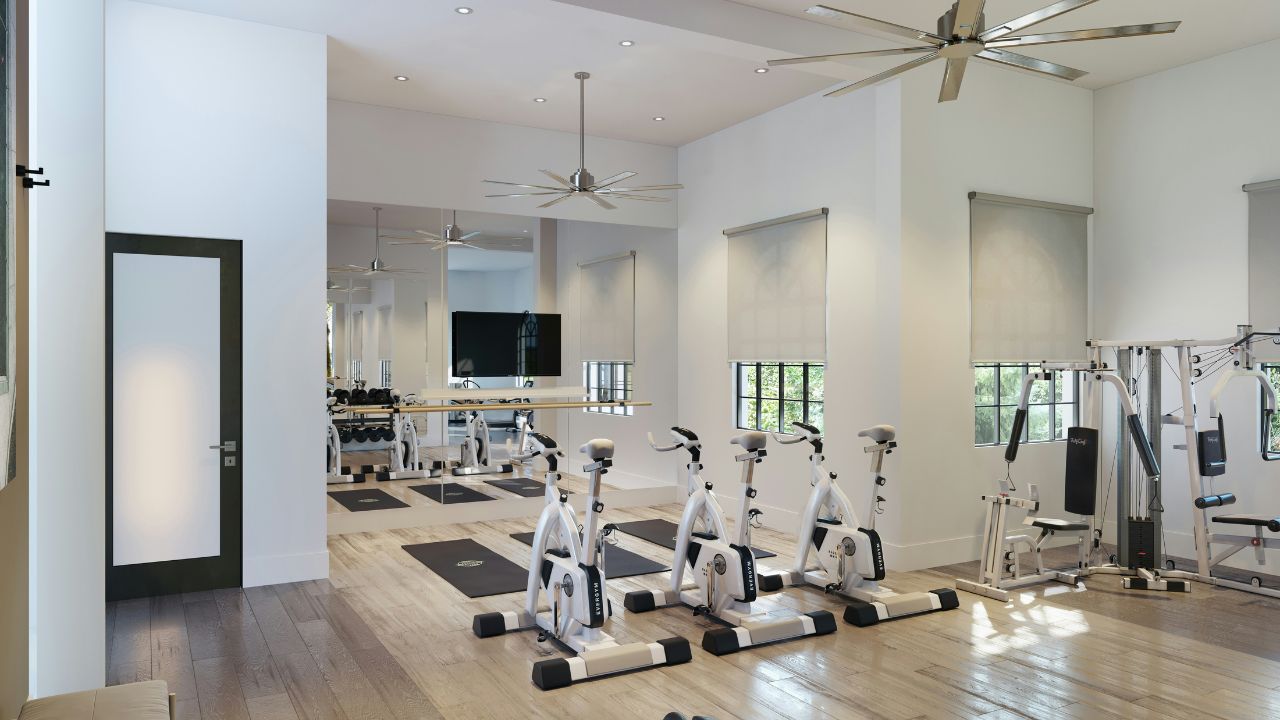Tech
Ventiladores de Techo: Enhancing Comfort and Efficiency
Published
5 years agoon

Welcome to the world of comfort and efficiency with ventiladores de techo! Ceiling fans are not just functional additions to your home; they are stylish, cost-effective solutions that can enhance your living space while keeping you cool. In this blog post, we will explore everything you need to know about ceiling fans – from how they work to why they are a better choice than air conditioners. So sit back, relax, and let’s dive into the breezy world of ventiladores de techo!
What are Ceiling Fans and How Do They Work?
Ceiling fans are versatile appliances that provide both comfort and style to any room. They typically consist of a motor, blades, and a mounting system that allows them to be attached to the ceiling. The motor powers the rotation of the blades, creating airflow within the room.
As the blades spin, they create a downdraft or updraft depending on their direction. In warmer months, setting your fan to rotate counterclockwise helps cool the room by creating a breeze that evaporates moisture from your skin, making you feel cooler without actually lowering the temperature.
In colder months, running your fan in reverse (clockwise) at a low speed can help distribute warm air more evenly throughout the room by pushing it down from the ceiling. This simple adjustment can help reduce heating costs while keeping you comfortable all year round.
Why Choose Ceiling Fans over Air Conditioners?
Ceiling fans offer a cost-effective and energy-efficient cooling solution compared to air conditioners. They consume significantly less electricity, helping you save on your monthly utility bills. Not to mention, they are more environmentally friendly as they have a lower carbon footprint.
Unlike air conditioners that cool the entire room, ceiling fans create a wind-chill effect to make you feel cooler without actually lowering the temperature of the space. This can help reduce your reliance on air conditioning and still keep you comfortable during hot summer days.
Additionally, ceiling fans are versatile in their functionality. They can be used year-round to circulate warm air during winter months by simply reversing the direction of the blades. This dual-purpose feature adds value to your investment in a ceiling fan.
Moreover, ceiling fans come in various designs and styles to complement any decor while providing efficient airflow throughout the room. Whether you prefer a sleek modern look or a classic traditional design, there’s a ceiling fan for every aesthetic preference.
Types of Ceiling Fans
When it comes to ceiling fans, there are various types available to suit different needs and preferences. One common type is the standard ceiling fan, which typically comes with a light fixture attached. These fans are versatile and can be installed in most rooms.
For larger spaces or higher ceilings, you might want to consider a downrod mount ceiling fan. This type of fan hangs lower from the ceiling, providing better air circulation in spacious areas.
If you’re looking for something more compact or have low ceilings, hugger ceiling fans are a great option. These fans are mounted flush to the ceiling, making them ideal for rooms with limited vertical space.
For outdoor areas like patios or gazebos, damp-rated or wet-rated ceiling fans are recommended due to their ability to withstand moisture and humidity.
No matter your style or requirements, there’s a wide range of designs and finishes available in each category of ceiling fans to complement your home decor seamlessly.
Factors to Consider When Choosing a Ceiling Fan
When choosing a ceiling fan, there are several factors to consider to ensure you select the right one for your space.
Size matters. Pick a fan that fits the room’s dimensions – larger rooms require fans with longer blades.
Consider the height of your ceiling. For higher ceilings, opt for a fan with an extended downrod for proper air circulation.
Next, think about the style and design that complements your decor. Ceiling fans come in various finishes and blade designs to match any aesthetic.
Additionally, pay attention to the motor quality. A high-quality motor ensures better performance and durability in the long run.
Don’t forget about energy efficiency. Look for fans with an Energy Star rating to save on electricity costs while keeping your space comfortable all year round.
Installation Process for Ceiling Fans
Installing a ceiling fan is a relatively straightforward process that can greatly enhance the comfort and efficiency of your living space. Before beginning, ensure you have turned off the power to the existing light fixture at the circuit breaker. Start by assembling all necessary tools such as a ladder, screwdriver, wire stripper, and voltage tester.
Next, carefully follow the manufacturer’s instructions for mounting the ceiling bracket and hanging the fan motor. Make sure to secure all screws tightly to avoid any wobbling once it’s in operation. Connect the wires from the fan to those in your ceiling using wire connectors while ensuring proper color-coding for positive and negative connections.
Once everything is securely connected, attach the blades to the motor assembly according to the provided guidelines. Turn on the power again and test out your newly installed ceiling fan to enjoy improved air circulation in your home!
Tips for Using Ceiling Fans Efficiently
To maximize the efficiency of your ceiling fan, it’s essential to set the blades at the proper angle. During hotter months, ensure they rotate counterclockwise to create a cooling breeze. In winter, switch them to clockwise to help distribute warm air around the room.
Adjusting your fan’s speed according to the season is key. Higher speeds offer more airflow for a cooling effect, while lower speeds can gently circulate warm air downwards during colder periods.
Utilize your ceiling fan in conjunction with your AC or heater for optimal comfort and energy savings. By using both systems strategically together, you can maintain a comfortable temperature without overworking either appliance.
Remember to turn off your ceiling fan when leaving a room to save on electricity costs and reduce unnecessary wear on the motor. Consistent maintenance like dusting regularly and checking for any wobbling will also ensure smooth operation and longevity of your fan.
Maintenance and Cleaning of Ceiling Fans
Maintaining and cleaning your ceiling fan is essential to ensure its efficiency and longevity. Regular maintenance can help prevent dust buildup, which can affect the fan’s performance. Start by turning off the power to the fan before cleaning it.
Use a microfiber cloth or a duster to gently wipe down the blades, removing any dust or dirt that has accumulated. For a deeper clean, you can use a mild solution of water and dish soap to clean the blades thoroughly.
Make sure to check for any loose screws or wobbly blades while cleaning. Tighten any screws that may have come loose over time to keep the fan stable during operation.
Don’t forget about the motor housing – use a vacuum with a brush attachment to remove dust and debris from this area. Additionally, consider oiling the bearings in the motor according to manufacturer recommendations for smooth operation.
Conclusion
As we wrap up our discussion on ventiladores de techo, it becomes evident that these ceiling fans are more than just a cooling solution – they are a symbol of comfort and efficiency in any space. With their ability to circulate air effectively and reduce energy consumption, ceiling fans prove to be a valuable addition to any home or office.
By understanding the different types of ceiling fans available and considering factors such as size, blade material, and motor quality, you can make an informed decision when selecting the right fan for your needs. The installation process may seem daunting at first, but with proper guidance and tools, it can be a straightforward task.
Remember to use your ceiling fan efficiently by adjusting its direction based on the season and optimizing its speed according to your comfort level. Regular maintenance is essential for keeping your fan in top condition, so don’t forget to clean the blades regularly and check for any wobbling or noise issues.
In essence, ventiladores de techo are not just functional appliances; they are an integral part of creating a comfortable environment while enhancing energy efficiency. Considering all these aspects will help you make the most out of your ceiling fan for years to come.
FAQ’s
1. ¿Cuál es la altura adecuada para instalar un ventilador de techo?
La altura ideal para instalar un ventilador de techo es al menos a 2.4 metros del piso para garantizar una circulación eficaz del aire.
2. ¿Qué tamaño de aspas debería elegir para mi habitación?
El tamaño recomendado de las aspas depende del área de la habitación: hasta 13 m², se recomienda un diámetro entre 76-122 cm; entre 14-25 m², se sugiere entre 127-132 cm; y más grande que eso, opta por aspas mayores a los 132 cm.
3. ¿Puedo utilizar un regulador de velocidad con mi ventilador?
Sí, muchos modelos permiten el uso de reguladores de velocidad para ajustar la intensidad del flujo de aire según tus necesidades y preferencias.
You may like

Is Fmovies Safe? What You Need to Know Before Streaming

Dominating the Digital Pitch: A Step-by-Step Guide to Creating Futbol Libre Content

Conquering CricHD: A Comprehensive Guide to Cricket Streaming

What You Need to Know About Police Brutality?

12 Sites to Watch Free Online TV Shows with Complete Episodes in 2024


